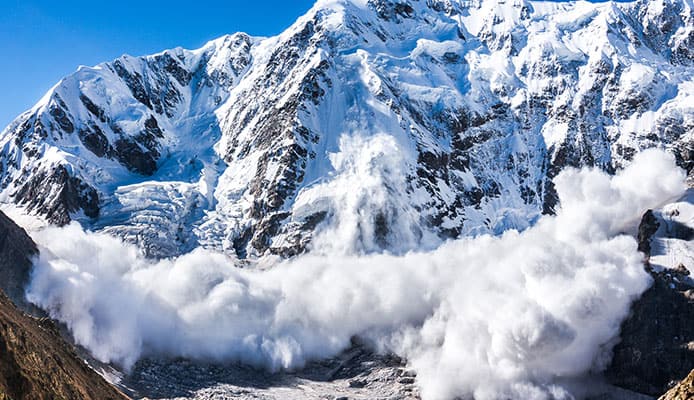
Rolling down snowy landscapes when skiing, snowboarding, snowshoeing or snowmobiling in the backcountry is an exhilarating experience but the risk of an avalanche is always looming. In addition to educating yourself on how to recognize and avoid risky situations, you should always have with you the essential avalanche rescue equipment – transceiver, probe, and shovel.
The backpack you pack your gear in and carry on your back can also help you live to tell the tale if you get caught in an avalanche. That is if you invest in the best avalanche backpack with an inflatable avalanche airbag system.
In the event of a snow slide, all you have to do is remain calm and pull the trigger to deploy the airbag. It will inflate and help you stay on top so you don’t end up buried deep when the snow settles. Here are four well-made and top rated avalanche airbags you can rely on to help you survive an avalanche followed by a buying guide with what you need to know about avalanche packs so you can make the right choice.
OUR TOP PICK
Backcountry Access MtnPro Vest
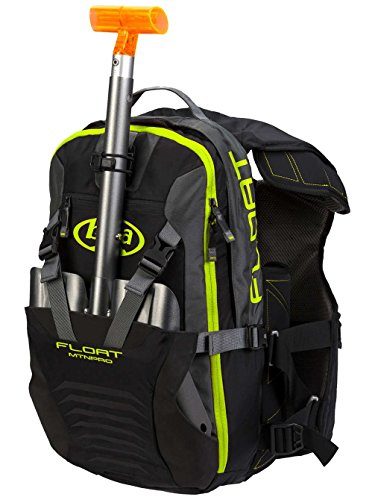
- Stand Out Features - Why We Love It
- Avalanche airbag pack and life vest combo
- Three protective features offer all-around protection
- Rugged construction for backcountry use
- Molded back panel, compression straps, and articulated shoulders
- Dedicated space for a probe and external shovel carry
- Big pockets for organization
- Compatible with BC Link radios and hydration systems
- Hundreds of refill centers in convenient locations
Size: Medium – Large
Inflation System: Float 1.0 Air Cylinder
EDITORS CHOICE
Black Diamond Halo 28 Jet Force
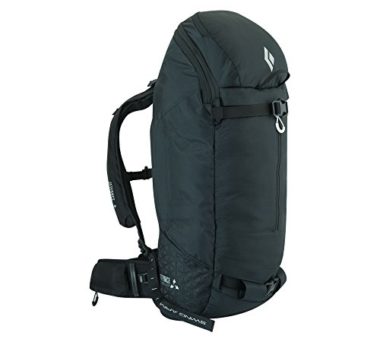
- Stand Out Features - Why We Love It
- High-speed battery-powered jet fan inflation
- Travel-friendly, repackable airbag
- No cylinder purchase and refills
- Unlimited deployment practice at zero cost
- Updated firmware for self-diagnosis
- Option to switch the trigger handle to the left or right shoulder
- Dedicated pocket for avalanche safety tools
- HiLo helmet holder and goggles pocket
- Diagonal ski carry system allows for airbag deployment
- Zippered back panel access
- Padded waist belt and shoulder straps,
Size: 28 liters / 1709 cubic inches
Inflation system: Jet fan and Rechargeable Battery
BEST VALUE
Backcountry Access Float 25 Turbo
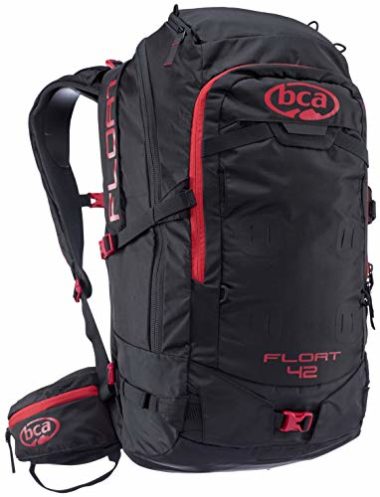
- Stand Out Features - Why We Love It
- The best snowmobile avalanche backpack
- Provides buoyancy and trauma protection
- Right or left deployment trigger attachment
- Compression back panel with internal support stay
- Fixed leg strap for secure attachment
- Height-adjustable waist belt
- Multiple compartments and pockets
- Internal and external shovel attachment
- Fleece-lined goggle pocket
- Hydration sleeve and BC Link radio compatibility
- Rugged ballistic nylon fabric and storm zipper flaps
Size: 25 Liters
Inflation System: Air Cylinder
Backcountry Access BCA Float 32
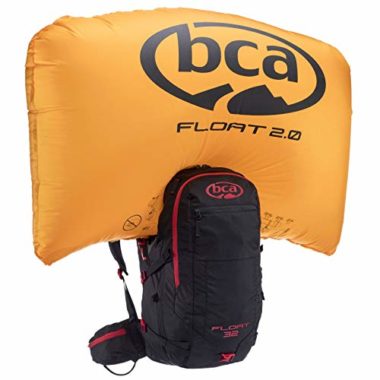
- Stand Out Features - Why We Love It
- Plenty of storage space for day trips
- Acts as a floatation aid and offers trauma protection
- Float 2.0 air cylinders are more portable
- Left or right-sided trigger mechanism
- Padded waist belt and shoulder straps
- Molded back panel and compression straps
- Rugged nylon material with a DWR treatment
- Dedicated safety pocket for avalanche safety tools
- Diagonal ski carry system and vertical snowboard carry
- Fleece-lined google pocket
- Hydration compatible
- Conveniently located refill centers
Capacity: 32 liters
Inflation System: Float 2.0 Air Cylinders
How To Choose An Avalanche Airbag – Buying Guide
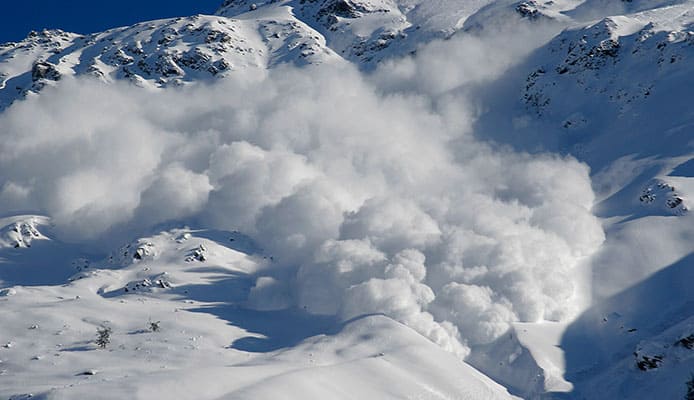
An avalanche pack is composed of a backpack, airbag, and deployment system. Like all other backpacks, avalanche backpacks come in different designs, sizes, and capacities and have different features.
And while avalanche airbag systems generally work the same way, the inflation mechanisms are different. Choosing the best backpack for avalanche survival requires a consideration of all these factors. Here are the things to consider in order to determine what type, size, and system suit your needs best:
Type
An avalanche airbag pack is composed of a backpack and an airbag system. Avalanche packs are classified according to how the airbag system is attached to the backpack. If you use only one backpack for snow sports, an integrated design where the airbag system is built into the backpack fits the bill.
Would you like an avalanche airbag system that you can attach to multiple backpacks of different sizes? A base unit design is swappable and offers you the flexibility you need. The third type has a detachable design. You can fully disassemble it and use it as a regular backpack for travel, hiking, or running errands.
Number of Airbags
Most avalanche packs have single-chamber airbags. The best avalanche airbags are made of super-tough materials that can resist puncturing even when being tossed around in a snow slide.
There are also avalanche airbag systems composed of two or more airbags. In the event that one airbag is punctured, the extra airbag or airbags will remain functional and boost your volume so that you end up close to the surface when the avalanche calms down.
Activation
If you get caught in a snow slide, an avalanche airbag system requires manual activation by pulling a trigger. How you will activate your airbag in the event of an avalanche is an important consideration to make so you can choose an airbag that works well for you.
Canister and cartridge activation airbags work with metal or carbon fiber cylinders that hold pressurized air. Pulling the trigger causes the pressurized cartridge to inflate the airbag. You have to refill the canister after every deployment. If you opt for this option, check whether the cylinder is part of the package or you will have to purchase one separately.
Non-refillable cartridges hold compressed nitrogen, which torelates freezing temperatures better. With these cartridges, yanking the cord releases a small explosive charge that pushes a needle to puncture the compressed gas cartridge to release the air and inflate the airbag. Since the cartridge is punctured after deployment, it cannot be refilled and has to be replaced by the manufacturer.
Electric fan activated packs feature a powerful fan that pumps air into the airbag powered by a cold temperature resistant rechargeable battery. If you often travel by air to ski destinations, this is the most convenient option as you don’t have to carry canisters or worry about refilling them.
Another advantage is that you can test the system as much as you want. A single charge powers several activations and you can recharge the battery when it runs out of juice. Knowing you can activate the airbag multiple times without depleting the battery also means that you’re less likely to hesitate to deploy the airbag.
Size
Most of the time you will be skiing or snowboarding your avalanche backpack will be functioning just like a regular ski or snowboard backpack to carry the things you need to have with you such as shovel, probe, radio unit, helmet, goggles, puffy coat, ski, snowboard and more.
This means that you need to choose a pack with enough storage space to accommodate what you need to carry and be easy to carry on your back as you roll down the slopes.
The capacity to go for will depend on what type of riding you will be doing while wearing the avalanche pack. A small pack with a capacity rating of 15 to 20 liters will fit the essentials you need for cat and Heli skiing trips. For backcountry touring day trips, a volume of 25 to 35 liters will accommodate everything you need.
For multi-day hut to hut trips, guiding and longer expeditions, a backpack of 40 to 50 liters is a good size for all the supplies and equipment you will be taking with you without weighing you down on the slopes.
You might also like: Bluetooth Beanies
Fit
For comfort, performance, and safety, proper backpack fit is essential. You won’t be comfortable skiing, snowboarding, snowshoeing or snowmobiling with a pack that doesn’t fit your torso length and body type. If it doesn’t fit well, it also won’t deploy correctly to help in the event of a snow slide.
The back panel should sit comfortably on your back. The shoulder straps adjusted to suit your torso. The hip belt lying just above your hip bones. When deployed, the airbags should surround your torso in a way that will offer maximum protection.
To get a correctly fitting pack that will sit comfortably on your back, pay attention to the torso length, hip belt width and adjustability of the pack and choose a size that is appropriate for you. A molded back panel and compression straps also help with stabilization and fit.
Features
There are some other features these types of winter backpacks can have to up the utility, safety, comfort, and convenience they offer. Nice to have features include a leg strap that acts as a harness and prevents the pack from flying off of you if you get caught in a violent slide.
A hip belt that distributes the load so that it is comfortable especially when carrying a heavy backpack and also helps to secure the backpack on your person. A locking clasp on the airbag trigger to prevent accidental activation. An option to have the trigger handle either on the left or right shoulder so it is easier to grab depending on whether you’re more comfortable pulling the cord with your right or left hand is also nice.
As for storage, it is nice to have compartments and pockets for storing the supplies and accessories you will be carrying where they are easily accessible. As for the ski and snowboard carry system, make sure that it won’t hinder the deployment of the airbag in the event of a disaster.
Portability
If you will be traveling by air to reach some of the backcountry ski destinations you would like to tour, a fan activated pack that is battery-powered is your best option as you won’t have to go through the hassle of flying with an empty canister and refilling it once you get to your destination.
When traveling with a canister system, the Transportation Safety Administration (TSA) will only allow you to fly with the cartridge if it is empty and refill it once you get to your destination. You can also buy a new, filled cartridge at your destination.
Be sure to find out whether your airbag manufacturer has authorized refill stations where you’re going. If you have a BC airbag, they have refill centers near cities and resorts in ski destinations.
FAQs
Q: Why Do I Need an Avalanche Airbag?
You need an avalanche airbag to help you survive in the event that you get caught in an avalanche when skiing, snowboarding, snowshoeing, or snowmobiling in the backcountry.
While knowing how to spot and avoid risky situations is the best way to avoid an encounter with an avalanche, mother nature is unpredictable in the great outdoors and it is always wise to hope for the best but prepare for the worst.
Avalanche preparedness involves equipping yourself with knowledge about avalanches and a survival kit composed of a shovel, probe, transceiver and an airbag backpack system. Having this kit and knowing how to use it can increase your chances of survival if you find yourself facing this violent force of nature.
Q: In What Cases I Must I Carry an Avalanche Airbag?
If you are going on off-piste snow adventures in the backcountry on terrain that is prone to avalanches, it is important to carry an airbag backpack for avalanche for your safety. You can carry an avalanche airbag backpack when skiing, snowboarding, ski touring, or split boarding. It is also an essential safety tool for freeriding, backcountry, side-country, and high alpine snowmobiling.
Q: How Effective Are Avalanche Airbags?
Very effective! According to a study conducted by Dr. Pascal Haegeli, wearing and deploying an avalanche airbag correctly improves one’s chance of surviving an avalanche by fifty percent. There are many statistics where avalanche airbag backpacks have helped adventurers survive snow slides.
An avalanche is a moving aggregate of objects of different sizes. In line with the principle of inverse segregation, the larger objects rise to the top while smaller objects sink to the bottom. When your airbag inflates and expands, it increases your volume so that you stay afloat and aren’t buried deep when the snow finally settles.
This prevents suffocation and makes it easy for rescuers to spot you. Some airbags also protect your head, neck and upper body from trauma and deflate after three minutes to create an air pocket if you happen to be buried.
While avalanche airbag packs can significantly increase your chances of survival, they don’t guarantee survival. One can still hit cliffs, trees and other obstacles that can cause fatal trauma. The best way to be safe is to learn how to read terrain, snow and weather conditions and avoid risky situations so you can avoid an encounter with an avalanche altogether. You should also always carry other avalanche safety equipment – avalanche probe, avalanche beacon, shovel, and helmet.
Q: How to Replace Air Cylinder?
If your avalanche airbag uses compressed air cylinders, you must replace the air cylinder after deploying the airbag or after traveling with an empty cartridge. All you have to do is take the empty air cylinder to a certified refill center and you will get a full one.
Top airbag backpack manufacturers like Backcountry Access and ARVA offer user-refillable canisters that can be filled with compressed air at authorized ski, scuba or paintball shops, and some fire stations. Used ABS cartridges can only be refilled by ABS and exchanged by ABS dealers.
Globo Surf Overview
Winter adventures in the backcountry are some of the most exciting outdoor activities but there are risks involved. Equipping yourself with avalanche education, skills and a survival kit composed of a probe, beacon, and shovel can give you peace of mind to enjoy your activities while knowing that you’re prepared just in case you encounter a snow slide. An avalanche airbag pack is the fourth must-have item for avalanche survival.
The four avalanche airbag backpacks reviewed here are among the best avalanche airbags on the market. You can rely on any one of them to help you stay afloat and increase your chances of surviving if you get caught in a snow slide. While you hope to never have to use it, it is important to practice deploying it so you will be able to activate it correctly in the event of an avalanche.

